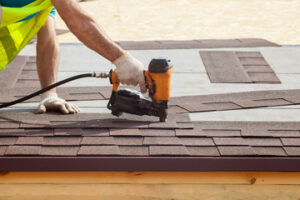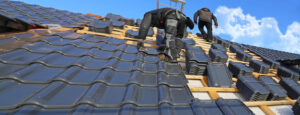Perth Insulation Removal is a demanding DIY project that requires special equipment and adherence to strict safety measures. It’s also important to note that issues like pest infestation and moisture damage need to be addressed prior or concurrently with insulation removal.
Prioritize safety by wearing a mask, goggles, and gloves. Turn off the power and disconnect live wires in your attic to avoid electrical hazards.
Insulation isn’t easy to inspect for damage since it’s typically behind drywall or in cramped, hard-to-access spaces like attics and basements. However, if you suspect that your insulation is damaged or moldy, it’s important to act quickly. Mold spores spread quickly in homes, and they are especially dangerous to your health if they’re present in the air you breathe. If you notice a musty smell, experience allergy symptoms like coughing or sneezing, or see signs of mold in the drywall and wood framing, it’s time to get the insulation replaced.
Moldy insulation should be removed not only because it reduces the efficiency of your home’s heating and cooling systems, but also because it compromises the safety of your family and pets. Mold spores can trigger respiratory problems, eye irritation, and a host of other health issues. If you suspect that your insulation is affected by mold, it’s best to have a professional perform a virtual mold inspection to help identify the type and severity of the problem.
It’s possible to clean up a small amount of mold on insulation, but extensive damage or severe mold contamination will require removal and replacement. It’s possible to reduce the risk of mold in your insulation by addressing any plumbing or roof leaks promptly, limiting the amount of moisture entering your home, and using dehumidifiers and exhaust fans to keep humidity under 50%.
Fiberglass insulation can be particularly susceptible to mold growth, since groundwater can easily pierce through cracks and gaps along the walls of your home. Water, dust, and dirt can also reach your fiberglass insulation if you have a leak in your ceiling or walls. If you see any signs of a musty odor, persistent allergy symptoms, or mold on the drywall near your insulation, it’s time to replace it.
Insulation can be replaced in your home’s walls, attic, and crawlspaces with new cellulose, fiberglass, or spray foam insulation. It’s important to hire a professional when replacing your insulation to ensure that the new materials you choose will provide effective protection against the elements and allergens, while minimizing energy costs and maximizing comfort.
Leaky Attic or Walls
If you have a water leak in the attic or upper rooms, it’s important to move stored items out of the area and let it dry. Water in the attic can weaken support joists, cause wood rot and promote mold growth. Moisture in upper rooms can damage drywall and create musty, mildew-like smells. If a roof leak is the source, water stains, discoloration of paint and mold growth on ceilings or walls indicate continuing moisture exposure.
If the leak is from an attic soffit or vent, removing the insulation under the drip will allow you to see where it is coming in and take steps to fix the problem. Checking for air leaks is an important part of any home maintenance, especially if you have an older house with original insulation.
You can find attic leaks by looking for the areas where walls (inner and outer) meet the attic floor, dropped soffits over kitchens and bathrooms, slanted ceilings, recessed lights and furnace flues. Look for dirty insulation; if it’s soaking wet, you probably have a leak. Identifying the source of the leak can be tricky, since moisture spreads and drips downward and can travel under insulation or through drywall. You can track the leak back to its source by tracing drips, moisture trails or accumulated condensation.
Leaks from the attic can also occur around ductwork connections in an attic, so it’s good to inspect and seal any open cavities. A professional HVAC company can help with comprehensive duct cleaning, sealing and insulation.
Once a water-damaged attic or upper room is dried, you should move items out and ventilate the area to prevent further moisture damage. Use box fans, a cross breeze and standing or dehumidifiers to circulate air. You can use EPA-approved cleaners to kill any mold or mildew spores in the attic space. Drying a wet attic can take two weeks or more, so it’s important to be patient. If you want to speed up the process, consider using a structural drying service. It’s important to remove all items that got wet, including stored belongings and even attic insulation.
Damaged Roof or Soffit
The soffit, located under the roof’s eaves, is a critical component of a home’s structure. It is responsible for protecting the underside of the roof from moisture and pests, among other important functions. When a soffit is damaged, it can lead to problems that impact the entire structure of your home, including rot, mold and pest infestation. To help prevent soffit damage, homeowners can regularly check the condition of their soffits.
One way to tell if a soffit is damaged is by looking for holes and cracks. If you notice any of these issues, it is important to seek repair immediately. The soffit can be repaired with wood filler or epoxy to create a weather-resistant seal. It is also possible to replace the entire soffit with a more durable material, which can offer improved resistance against moisture and pests.
Another sign that the soffit needs repair is moisture buildup and mold. Moisture from a damaged soffit can leak into the attic, damaging insulation and other roof components. It can also lead to the growth of mold and mildew, which can pose health risks for family members. Additionally, a damp soffit can attract insects and rodents to your home.
To repair a soffit, you will first need to remove any shingle mold or fascia that is nailed to the damaged section of the soffit. You can do this by using a pry bar to loosen the nails and then carefully prying away the affected area of the soffit. If there is extensive rot, it may be necessary to cut out and replace the damaged areas of the soffit. Once the new materials are installed, you will need to caulk the joints to ensure that moisture does not get into the home’s structure.
A well-maintained soffit and fascia protect the structural integrity of your roof and improve the ventilation of your attic. They also add to the curb appeal of your home, boosting its resale value. However, many homeowners neglect the condition of their soffit and fascia until they experience significant damage. Fortunately, there are a number of signs to look out for that indicate it’s time to take action.
Dead Animals
All animals eventually die, and when they do, they can leave behind a terrible odor and cause stains, contamination, and pest infestation. In some situations, homeowners have no choice but to enlist the help of professionals in order to deal with a dead animal in an attic or wall space.
The first step in locating the carcass is to identify where the smell is strongest. A general search will work, but it is also a good idea to look in the ductwork and lift up floorboards. This will help narrow down the location, and can even reveal the exact spot. It’s also helpful to listen for scratching sounds. These may indicate that the animal is in a wall or ductwork, and can help to locate the carcass.
Once the carcass has been located, it should be disposed of properly. The safest way to do this is to call a local nuisance wildlife removal company. They can remove the carcass and any associated debris, deodorize the area, and even disinfect the affected surfaces. They will also be able to advise on how the animal got into the house, and provide preventative measures to avoid future incidents.
In rural areas, it is possible to move the carcass to an un-mowed, brushy or wooded area at the edge of the property for natural decomposition. This will need to be done in a manner that ensures the carcass cannot be accessed by children or pets. It is also important to check with your town hall about laws on this subject, as some municipalities have stricter rules regarding the disposal of animal carcasses.
If you notice signs that you need to remove insulation in your home, contact your local insulation contractor for assistance. They can inspect the attic and walls, remove the old insulation, clean and disinfect the area, and then install new insulation. They can also advise you on how to prevent future issues, including sealing gaps around the perimeter of your property, ensuring garbage bins are tightly closed, and keeping vegetation trimmed. These steps can all go a long way in preventing unwanted visitors from making themselves at home in your living spaces.
















